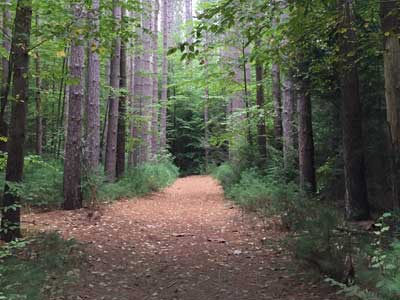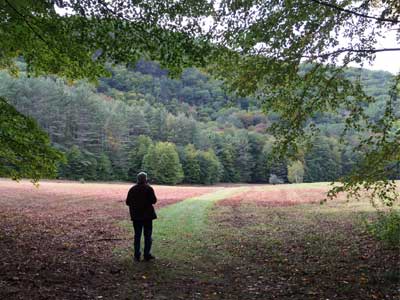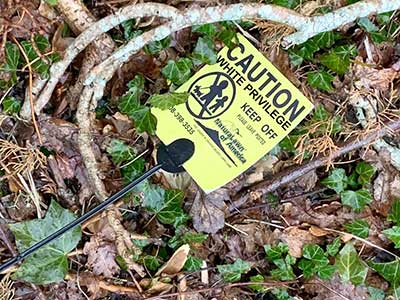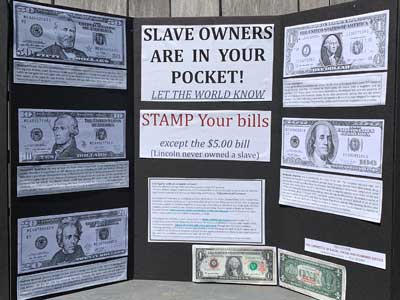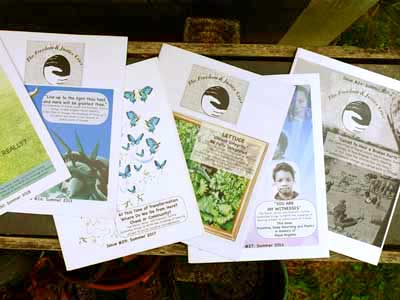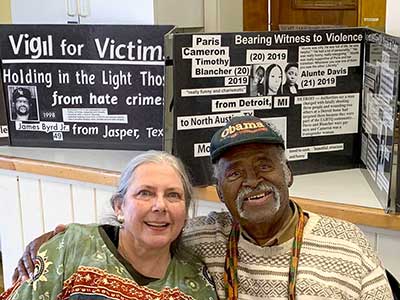by Jeffrey Ostler | July 2021
“We hold these truths to be self evident.” Say these words, and many Americans will be able to recite what follows: “that all men are created equal, that they are endowed by their Creator with certain unalienable Rights, …The closing words of the Declaration are far less known. The last of a list of 27 grievances against King George III, they read as follows: “He has excited domestic insurrections amongst us, and has endeavored to bring on the inhabitants of our frontiers, the merciless Indian savages whose known rule of warfare, is an undistinguished destruction of all ages, sexes, and conditions.” These words call attention to hard truths about America’s founding that have often been brushed aside.
TAGS: [Assumptions] [2020’s] [Slavery] [Indigenous] [Systemic Racism] [White Supremacy] [White Culture] [History] [Politics] [White Privilege] [Economics] [Racial Terrorism]
Resource Links Tagged with "Assumptions"
Jordan Crowley Would Be in Line for a Kidney—if He Were Deemed White Enough; How An Assumption Made in a Study in 1999 is Delaying Treatment for Thousands of Black Americans
by Jennifer Tsai | June 2021
Jordan is now 18, loves dogs, and is more interested in telling me about his college classes than the fact that he was recently hospitalized for seizures, a complication of his illness. He’ll need a kidney transplant soon. He would be closer to getting that kidney transplant, if only he were categorized as white. A patient’s level of kidney disease is judged by an estimation of glomerular filtration rate, or eGFR, which normally sits between 90 and 120 in a patient with two healthy kidneys. In the United States, patients can’t be listed for a kidney transplant until they’re deemed sick enough—until their eGFR dips below a threshold of 20. Jordan is biracial, with one Black grandparent and three white ones. His estimated GFR depends on how you interpret this fact: A white Jordan has a GFR of 17—low enough to secure him a spot on the organ waitlist. A Black Jordan has a GFR of 21.
TAGS: [Assumptions] [2020’s] [Systemic Racism] [White Supremacy] [White Privilege] [White Culture] [Myths] [Black Lives Matter] [Strategies] [Advocacy] [Health Disparities]
A Real Live ‘Karen’ Attacked Me for My Article About White Rage; It was a Special Moment for I was Beginning to Think They Didn’t Really Exist!
by B Kean | July 2021
All this white and racist BS is all in your head, the murder of blacks is mainly by blacks against themselves! So Stfu you are an evil Democrat trying to destroy America (Karen N Post)!!! The white-mob-morality police had spoken. How dare I, a white man, question their resentment, their victimhood? The Karens are out there and many of you have had run-ins. Having never been “Karen’d,” I would watch in awe as others were verbally abused by the usually middle-aged women losing it over things that really had nothing to do with them. Karens get especially angry with Black people. They have a tremendous amount of resentment impacted inside of them that I am sure not even two or three colonics could dislodge. Recently, I wrote an article entitled I Have White Rage. Let me tell you, it brought out the racist cockroaches, alright. It even brought to my proverbial doorstep that very angry, and I don’t doubt, unstable, Karen whose post is up above here.
TAGS: [Collective Action] [2020’s] [White Supremacy] [White Privilege] [White Culture] [Systemic Racism] [Black Lives Matter] [Politics] [Calling Police] [White Defensiveness] [Assumptions]
There Is No Such Thing as a ‘White Ally’
by Catherine Pugh, Esq. | July 2020
Racism is not “ours.” It is yours. And it is yours exclusively. Black folks did not build Black hate, and we certainly did not build it with you. Black folks are not The Bad Actor in Black hate. We can only work to convince The Bad Actor to stop acting badly. Black folks cannot kill Black hate in its cradle. Black hate breeds in places we cannot reach. If we could have killed it, we would have killed it. Trust that it is not our apathy about our own lives that keeps us dying in the streets. Worse, racism disappears when we try to look it in the eye, lost in a sea of nonsensical protestations:
• “I don’t see color”: Why are we talking about racism then?
• “I’m not racist”: Ooookayyyy, whatever it is you call this, you’re still getting fired for it. …
TAGS: [Assumptions] [2020’s] [Colorblindness] [Systemic Racism] [White Fragility/Tears] [White Privilege] [Tips-Dos/Don’ts] [White Defensiveness] [“All Lives Matter”] [White Culture] [White Supremacy] [Individual Change] [-ing While Black] [Black Lives Matter] [Accountability]
The Blackfoot Wisdom that Inspired Maslow’s Hierarchy
by Teju Ravilochan | June 2021
Deeply curious about the reason for the stark difference between Blackfoot culture and his own culture, Maslow sought out positive deviants, or unusually successful individuals. He started with the wealthiest members of the Blackfoot tribe. He discovered that “for the Blackfoot, wealth was not measured by money and property but by generosity. The wealthiest man in their eyes is one who has almost nothing because he has given it all away” (Coon, 2006). Maslow witnessed a Blackfoot “Giveaway” ceremony in his first week at Siksika. During the Giveaway, members of the tribe arranged their tipis in a circle and publicly piled up all they had collected over the last year. Those with the most possessions told stories of how they amassed them and then gave every last one away to those in greater need (Blood & Heavy Head, 2007, (video 7 out of 15, minutes 13:00–14:00). By contrast, as shared by Maslow’s biographer Edward Hoffman, Maslow observed different qualities in members of his own culture.
TAGS: [Strategies] [2020’s] [Indigenous] [Social Justice] [Advocacy] [Role Model] [Tips-Dos/Don’ts] [Assumptions] [Economics]
What Really Happened on Juneteenth — and Why It’s Time for Supremacists and Their Sympathizers to Surrender
by Robin Washington | June 2021
If you saw my column about Juneteenth posted here over the last few days, or a previous version on the website of Be’chol Lashon several years ago, or a video version currently presented by Be’chol Lashon, you would know I had bittersweet feelings about the history of the day. I no longer do. I am outraged by it. My change in emotion comes after learning from historian friends that the oft-repeated tale of Union soldiers arriving in Galveston, Texas, on June 19, 1865 to inform enslaved African Americans that they were free is pure fiction. Not because they weren’t legally freed 2-½ months earlier when Confederate Gen. Robert E. Lee surrendered at Appomattox. Or technically freed 2-1/2 years before when President Lincoln issued the Emancipation Proclamation, declaring slavery null and void in areas under rebellion, very much including Texas.
TAGS: [Assumptions] [2020’s] [History] [Slavery] [Myths] [Racial Terrorism] [White Supremacy] [White Culture] [Systemic Racism] [Social Justice]
Battle for the Ballot; The Black Sorority That Faced Racism in the Suffrage Movement but Refused to Walk away
by Sydney Trent | August 2020
The air was chilly, the trees still bare, yet the sky was clear and bright. March 3, 1913, was shaping up to be a perfect day for a grand and purposeful parade. Thousands of showily dressed suffragists had amassed in Washington from across the nation — indeed the world — to march along Pennsylvania Avenue on the eve of President Woodrow Wilson’s inauguration.
TAGS: [Assumptions] [2020’s] [Politics] [Role Model] [History] [Systemic Racism] [Employment] [White Supremacy] [White Culture] [White Privilege] [Social Justice]
I Did Nothing Wrong. I Was Arrested Anyway.
by Robert Williams | July 2021
I never thought I would be a cautionary tale. More than that, I never thought I’d have to explain to my daughters why their daddy got arrested in front of them on our front lawn. How does one explain to two little girls that a computer got it wrong, but the police listened to it anyway — even if that meant arresting me for a crime I didn’t commit? This is what happened to me: As I was getting ready to head home from work one day in January of 2020, my wife called me and told me that a police officer had called and said I needed to turn myself in. She was scared and confused. The officers called me next, but wouldn’t explain why I was supposed to turn myself in or what I was accused of, so I thought it was probably a prank. I couldn’t imagine what else it could be. But as I pulled up to my house, a Detroit police squad car was waiting for me. The squad car swooped in from behind to block my SUV — as if I would make a run for it. One officer jumped out and asked if I was Robert Williams. I said I was. He told me I was under arrest. By then, my wife, Melissa, was outside with our youngest in her arms, and my older daughter was peeking around my wife trying to see what was happening. I told my older daughter to go back inside, that the cops were making a mistake and that daddy would be back in a minute. But I wasn’t back in a minute. I was handcuffed and taken to the Detroit Detention Center.
TAGS: [Strategies] [2020’s] [-ing While Black] [Systemic Racism] [Policing] [Assumptions] [Politics]
This Man Not Only Invented the Gas Mask But Rescued 32 Men During An Explosion With It
by Storyteller | JULY 2021
The son of former slaves, Garrett Morgan was born in Paris, Kentucky on March 4, 1877. His early childhood was spent attending school and working on the family farm with his brothers and sisters. While still a teenager, he left Kentucky and moved north to Cincinnati, Ohio in search of opportunity. Although Garrett Morgan’s formal education never took him beyond elementary school, he hired a tutor while living in Cincinnati and continued his studies in English grammar.
… On July 25, 1916, Garrett Morgan made national news for using his gas mask to rescue 32 men trapped during an explosion in an underground tunnel 250 feet beneath Lake Erie. Morgan and a team of volunteers donned the new “gas masks” and went to the rescue. After the rescue, Morgan’s company received requests from fire departments around the country who wished to purchase the new masks. The Morgan gas mask was later refined for use by U.S. Army during World War I. In 1914, Garrett Morgan was awarded a patent for a Safety Hood and Smoke Protector. Two years later, a refined model of his early gas mask won a gold medal at the International Exposition of Sanitation and Safety, and another gold medal from the International Association of Fire Chiefs.
TAGS: [Strategies] [2020’s] [History] [Role Model] [Assumptions]
Black America’s Neglected Origin Stories
by Annette Gordon-Reed | June 2021
The history of Blackness on this continent is longer and more varied than the version I was taught in school. Origin stories matter, for individuals, groups of people, and nations. They inform our sense of self, telling us what kind of people we believe we are, what kind of nation we believe we live in. They usually carry, at least, a hope that where we started might hold the key to where we are in the present. We can say, then, that much of the concern over origin stories is about our current needs and desires, not actual history. Origin stories seek to find the familiar, or the superficially familiar—memory, sometimes shading into mythology. Both memory and mythology have their uses, even if they must be separated from the facts of the past. But in the case of Black people, the limitations of the history and possibility of our origin stories have helped create and maintain an extremely narrow construction of Blackness.
TAGS: [Assumptions] [2020’s] [History] [Myths] [Civil War] [Slavery] [Indigenous] [Black Lives Matter] [White Supremacy] [White Culture] [White Blindness] [Systemic Racism] [Silencing POC] [CRT]
“Put the Fangs Back in Feminism”: Author Rafia Zakaria on How Feminism Loses Relevance to Whiteness
by Kylie Cheung| August 2021
“If we want to salvage feminism, you have to remove white racial privilege,” says “Against White Feminism” author
y now you’ve seen the jokes about the “girlboss,” and her depoliticized, so-called “feminism” that can be achieved through climbing the corporate ladder or buying an expensive pair of shoes. You’ve seen the scathing takedowns of women politicians like Hillary Clinton for their parts in U.S.-perpetrated atrocities in the Middle East. And you’ve seen videos of white woman after white woman calling the cops on Black people in their communities, and the lethal power of white women’s tears when called out for racism. What does all of this have in common? According to Rafia Zakaria, an author, lawyer, domestic violence survivor and tireless voice for women of color-led feminism, in her new book “Against White Feminism” (W.W. Norton & Company, Aug. 17) all of this extends from white feminism. White feminism, Zakaria notes on the very first page of her book, isn’t defined by an individual’s race, but their refusal “to consider the role that whiteness and the racial privilege attached to it have played . . . in universalizing white feminist concerns, agendas and beliefs as being those of all feminists.”
TAGS: [Individual Change] [2020’s] [White Culture] [White Privilege] [White Fragility/Tears] [Systemic Racism] [White Blindness] [White Supremacy] [Collective Action] [Politics] [Social Justice] [Tips-Do’s/Don’ts] [Prison System] [Racial Terrorism] [Assumptions]
Teenagers Charged In Death of Little Girl Who Was Shot By Cops; The Girl’s Family Says It’s the Officers Who Should Be Held Accountable
by Keith Reed | November 20201
Two teens in a Philly suburb were just charged with the tragic shooting death of an eight-year-old Black girl who died back in August. The only problem is nearly everyone acknowledges it was cops—who have yet to be charged—who shot the girl and three other people at the scene. We’re confused, too. According to the Philadelphia Inquirer’s coverage, the incident happened on Aug. 27, 2021 when Hassein Strand, 18, and Angelo Ford, 16, started shooting at each other about a block away from where a high school football game was concluding. Both are now charged with first-degree murder and other counts by the Delaware County District Attorney’s office in the death of Fanta Bility, a little girl who died at the scene. It all sounds straightforward, until we hear from the DA, Jack Stollsteimer about why he charged who he charged.
TAGS: [Racial Terrorism] [2020’s] [Policing] [Police Shootings] [Accountability] [-ing While Black] [Black Lives Matter] [Systemic Racism] [Justice System] [Assumptions]
Understanding the History and Traditions of Día de los Muertos; Mexican American Studies Scholar Michelle Téllez Gives An Overview of the Autumn Holiday of Mourning That Originated in Mexico and is Now Celebrated Around the World.
by Kyle Mittan, University Communications |October 2021
Anyone who’s spent a few autumns in Tucson will know the signs of the changing season, especially the cooler temperatures and the increase in drivers on the road as snowbirds return. But the appearance of some other, more unique, symbols also mark the occasion. Calaveras, or skulls – often in the form of edible, decorative sugar skulls – and papel picado, pieces of colorful paper with intricately cut-out designs, are ubiquitous in southern Arizona come October, but what do they mean? They’re icons of Día de los Muertos, or Day of the Dead – a holiday with roots in Mexico that is now celebrated all over the world.
TAGS: [Assumptions] [2020’s] [Latino/a] [Indigenous] [Definitions] [Art & Culture]
The Inspirational Story of Horace King: Highly Respected Engineer Horace King is one ofLagrange’s Most Inspirational Historical Figures; Raised as an Enslaved Person, King Died A Free Man and Highly Respected Engineer
by Visit LaGrange Georgia | Date Unknown
Horace King was born in 1807 in South Carolina. Unlike most enslaved persons, he was taught to read and write at a young age. By adulthood, he’d become a competent builder. It’s unclear how he learned the lattice truss design he used for building bridges, but it may have occurred when the lattice truss Pee Dee River Bridge was built near his home. Around 1830, King was purchased by contractor John Godwin. Godwin took King with him to build a bridge over the Chattahoochee River and the pair began working on construction projects throughout the South. In the mid-1830s, Godwin sent King to Oberlin College in Ohio, the first college to admit African Americans. Following his education, King returned to work with Godwin, building courthouses and bridges throughout Georgia and Alabama. In 1841, they rebuilt their Columbus City Bridge which had been destroyed in a flood. Godwin experienced financial difficulty in the late 1830s and transferred ownership of King to his wife and her uncle, possibly to protect King from being taken by creditors. King was permitted to marry a free woman, Frances Gould Thomas, which was a rare allowance within states practicing the enslavement of people.
TAGS: [Assumptions] [History] [Slavery] [Role Model] [Politics] [Civil War] [Systemic Racism] [Black Lives Matter]
Black Lives Matter Protesters Were Overwhelmingly Peaceful, Our Research Finds; The Black Lives Matter Uprisings were Remarkably Nonviolent.
*Paywall Alert
by Erica Chenoweth and Jeremy Pressman | October 2020
When the Department of Homeland Security released its Homeland Threat Assessment earlier this month, it emphasized that self-proclaimed white supremacist groups are the most dangerous threat to U.S. security. But the report misleadingly added that there had been “over 100 days of violence and destruction in our cities,” referring to the anti-racism uprisings of this past summer.In fact, the Black Lives Matter uprisings were remarkably nonviolent. When there was violence, very often police or counterprotesters were reportedly directing it at the protesters. Since 2017, we have been collecting data on political crowds in the United States, including the protests that surged during the summer. We have almost finished collecting data from May to June, having already documented 7,305 events in thousands of towns and cities in all 50 states and D.C., involving millions of attendees.
Because most of the missing data are from small towns and cities, we do not expect the overall proportions to change significantly once we complete the data collection.
TAGS: [Assumptions] [2020’s] [History] [Black Lives Matter] [Policing] [Systemic Racism] [Myths]
Frequently Asked Questions About Critical Race Theory
by James Mulholland | November 2021
After their successes in the recent elections in Virginia and New Jersey, it is obvious the Republican Party intends use inflammatory and false depictions of Critical Race Theory as a strategy to frighten white suburban parents and play on latent racial prejudices. We can expect Critical Race Theory to be the boogeyman of the next election cycle. …The basic tenets of Critical Race Theory can and should be introduced to children in simple terms. For example, elementary children SHOULD be taught that the color of your skin does not make you better or worse than anyone else. High school students SHOULD be taught the history of legal and systemic racial discrimination in America. In addition, Critical Race Theory is vitally important for educators to understand. Teachers SHOULD be taught Critical Race Theory and it should inform their teaching philosophy and classroom content. Understanding Critical Race Theory will make our schools – which are institutions prone to systemic racism – less racist. Ironically, the problem in the United States is not that Critical Race Theory has infiltrated our public-school systems. The issue is that it has not.
TAGS: [Collective Action] [2020’s] [Definitions] [Anti-Racism] [History] [Assumptions] [Individual Change] [Systemic Racism] [Tips-Dos/Don’ts] [Teachers]
The Lewis and Clark Expedition from an Indigenous Perspective; New Federal-Tribal Partnership Will Deepen the Corps of Discovery Journey with Stories from the Many Tribes Who Helped the Explorers Find Their Way
by Wil Phinney | November 2021
“If it wasn’t for Indians, Lewis and Clark probably wouldn’t have made it,” said Gail Chehak, tribal relations and outreach manager at the American Indian Alaska Native Tourism Association (AIANTA), which is collaborating with NPS to develop online itineraries to promote the tribes that intersected with Lewis and Clark on their way across what became the United States. The online guides will include tribal events and sites, designed to help attract visitors ranging from families and bicycle tours to international tourism. Importantly, the stories will reflect the expedition from an Indigenous perspective, as told by the descendants of those who encountered the explorers as they made their way west. Cultural and geo-tourism will be highlighted on two websites, LewisAndClark.travel and NativeAmerica.travel.
TAGS: [Collective Action] [2020’s] [Indigenous] [History] [Assumptions] [Myths] [White Culture]
Broken System Can’t Keep Track of Native Deaths; from Medical Health Privacy Laws to a Maze of Siloed Information Systems, a True Accounting of COVID-19’s Impact on Indian Country is Impossible to Know
by Jourdan Bennett-Begaye, Sunnie Clahchischiligi, and Christine Trudeau | June 2021
In May of 2020, the Navajo Nation reported one of the highest per-capita COVID-19 infection rates in the United States. Since that milestone, official data reveals that the Navajo Nation has been one of the hardest-hit populations during the pandemic. The Navajo Nation boasts the largest population of any Indigenous nation in the United States, and thousands of Navajos live outside the nation, in towns along the border, cities across the country, and in other parts of the world, making it difficult to tally the virus’ impacts on Navajo citizens. It’s made worse by a labyrinthian system of local, state, federal and tribal data-reporting systems that often do not communicate with each other or share information.
TAGS: [Assumptions] [2020’s] [Health Disparities] [Indigenous] [Politics] [Myths] [Systemic Racism] [Silencing POC] [Denial]
The Indigenous Connection to the Underground Railroad
Submitted by Roy Finkenbine | June 2021
Most stories of the Underground Railroad follow the narrative of white people helping Black people escape slavery, but overlook the involvement of Indigenous allies who often risked their own lives to help freedom seekers cross into Canada safely. Historian Roy Finkenbine is among those rewriting that history. He’s working on a book tentatively called, Freedom Seekers in Indian Country, while teaching African American history at the University of Detroit Mercy. He spoke with Falen Johnson, host of Unreserved, about his research on Indigenous involvement in the Underground Railroad, and why he feels a moral obligation to write about it. What questions are you trying to answer in your upcoming book, Freedom Seekers in Indian Country? I’m looking at how and why Native Americans helped freedom seekers. How they helped includes providing sanctuary among their communities – often to boost their populations – and in assisting people to cross the border. They shared a kinship based on a common enemy, if we can use that term, in terms of white expansionism. Many groups like the Ojibwa referred to African-Americans as cousins and brothers. Peter Jones, a [Mississauga] missionary, said, and I’m paraphrasing here, “Negroes,” as he said, “have it even worse because of the iron bands of slavery. So we have an obligation to help.”
TAGS: [Assumptions] [2020’s] [Slavery] [Indigenous] [History] [Myths] [White Culture] [White Privilege] [White Supremacy] [Systemic Racism]
The Rise of The Racism Industry; Black People’s Value Goes Beyond Our Suffering
by Steve QJ | April 2021
Every black person has a story about racism. It might be about a chance encounter on holiday or being denied entry to our own home. It might be about the statistically improbable rate at which we’re “randomly selected” for additional screening or those awkward moments when a poorly thought out comment backfires.
If there’s such a thing as “the black experience”, these stories are a part of its oral tradition. A collection of life lessons, clapbacks, and cautionary tales through which we celebrate our victories and vent our frustrations. They’re in-jokes that provide a sense of community and solidarity. They’re touchstones that help us to navigate a world that doesn’t always treat us as it should.
TAGS: [Assumptions] [2020’s] [Systemic Racism] [Policing] [Police Shootings] [Social Justice] [Black Lives Matter] [History]
5 Phrases Your Black Friend Wishes You’d Stop Saying; If You Start Practicing Now, You Can Probably Eliminate These Words from Your Vocabulary by Black History Month
by Ajah Hales | January 2020 Statistically speaking, about 75% of White people don’t even have a Black friend, but on the off chance that you are one of the White people who do, I have a message for you from your (one) Black friend: Do better. In her New York Times...
Private Museums Could Face NAGPRA Scrutiny; Museums and Other Institutions that Accept Stimulus Funds Could Be Required to Repatriate Indigenous Artifacts and Remains
by Nanette Kelley | May 2021
Small museums and private institutions that accept federal CARES Act money or other stimulus funds could be forced to relinquish thousands of Indigenous items and ancestral remains now in their collections.
Under the Native American Grave Protection and Repatriation Act of 1990, museums or other institutions that accept federal funding must compile an inventory of Indigenous cultural items and initiate repatriation of the collections and remains to tribes or family members. At least two museums are now facing possible scrutiny – the nonprofit Favell Museum of Native American Artifacts and Contemporary Western Art in Klamath Falls, Oregon, and the End of the Trail Museum, which is connected to the Trees of Mystery gift shop in the redwood forest in Klamath, California.
TAGS: [Assumptions] [2020’s] [Indigenous] [Art & Culture] [Silencing POC] [History] [Politics] [White Supremacy] [White Culture] [Economics] [Systemic Racism] [Advocacy] [Social Justice]
Return the National Parks to the Tribes; The Jewels of America’s Landscape Should Belong to America’s Original Peoples.
by David Treuer | April 2021
The American story of “the Indian” is one of staggering loss. Some estimates put the original Indigenous population of what would become the contiguous United States between 5 million and 15 million at the time of first contact. By 1890, around the time America began creating national parks in earnest, roughly 250,000 Native people were still alive. In 1491, Native people controlled all of the 2.4 billion acres that would become the United States. Now we control about 56 million acres, or roughly 2 percent. And yet we remain, and some of us have stayed stubbornly near the parks, preserving our attachment to them. Grand Canyon National Park encloses much of the Havasupai Tribe and its reservation. Pipe Spring National Monument sits entirely inside the 120,000-acre Kaibab Paiute Indian Reservation, in northern Arizona. Many other parks neighbor Native communities. But while the parks may be near us, and of us, they are not ours.
TAGS: [Racial Terrorism] [2020’s] [History] [Indigenous] [Systemic Racism] [White Supremacy] [White Culture] [White Privilege] [Denial] [Social Justice] [Accountability] [Environment] [Politics] [Assumptions] [Silencing POC]
Whitewashing the Great Depression; How the Preeminent Photographic Record of the Period Excluded People of Color from the Nation’s Self-Image
by Sarah Boxer | December 2020
Quick, name one iconic Depression-era portrait each by Dorothea Lange, Walker Evans, and Russell Lee. My guess is that you’d choose Lange’s Migrant Mother, a portrait of Florence Owens Thompson and her children taken in Nipomo, California, in 1936. For Evans, you’d probably pick a 1936 portrait of tight-lipped Allie Mae Burroughs standing before the wall of her family’s cabin in Hale County, Alabama. For Lee, you might draw a blank, but you’d likely recognize his 1937 group portrait Saturday Night in a Saloon, showing four drinkers in Craigville, Minnesota. (It was used in the opening sequence of the TV show Cheers.)
TAGS: [Assumptions] [2020’s] [Silencing POC] [White Culture] [White Privilege] [White Supremacy] [Art & Culture] [History] [Systemic Racism] [White Defensiveness] [Politics] [Denial]
Performative Activism Is the New ‘Color-Blind’ Band-Aid for White Fragility; White People Embracing Hashtags Won’t Help Us Destroy Anti-Black Racism. Here’s Why.
by Maia Niguel Hoskin, Ph.D. | June 2020
Because Whites are the nonracialized majority, they live in an insulated environment of racial protection and comfort, which makes them unable to tolerate racial stress. Whiteness scholar Robin DiAngelo refers to this as White fragility and says this about it: Once White people are confronted with racial stress, it triggers various defensive responses in them, such as anger, guilt, silence, outward displays of emotion, defensiveness, and shutting down. Some argue that color-blindness has been used as a way for Whites to accommodate their racial fragility and ease their guilt. Feelings of shame and defensiveness associated with racial injustice can be minimized if its existence is denied. Like color-blindness, performative activism is manipulative and maintains systems of racial privilege by Whites centering their desire to seek comfort over addressing racial injustice.
TAGS: [Assumptions] [2020’s] [Myths] [White Fragility/Tears] [“All Lives Matter”] [White Defensiveness] [White Blindness] [White Supremacy] [Social Justice] [Policing] [Black Lives Matter] [History] [Colorblindness] [Tips-Dos/Don’ts] [Anti-Racism]
What Women’s Suffrage Owes to Indigenous Culture
by Briget Quinn | August 2020
It’s an under-known fact that the “revolutionary” concept of a democratic union of discrete states did not spring fully formed from the Enlightenment pens of the Founding Fathers, like sage Athena from the head of Zeus. No, the idea of “united states” sprang from the Haudenosaunee, collective name for six tribes that comprise the so-called (mostly by non-Natives) Iroquois Confederacy: the Seneca, Oneida, Mohawk, Onondaga, Cayuga, and Tuscarora nations. Should you doubt this, check out Congressional Resolution 331, adopted in 1988 by the 100th Congress of the United States, which says as much. It’s worth noting that the Haudenosaunee Confederacy still thrives today, likely the world’s oldest participatory democracy.
TAGS: [Assumptions] [2020’s] [Collective Action] [History] [Indigenous] [Myths] [Politics] [Silencing POC] [Systemic Racism] [White Blindness] [White Culture] [White Fragility/Tears] [White Privilege] [White Supremacy]
Black boy, 11, Forced to Kneel and Apologize by White Headmaster Who Called it the ‘African Way’
by Michael Elsen-Rooney | March 2021
A white Long Island Catholic school headmaster forced a Black 11-year-old student to kneel down and apologize to a teacher — calling it the “African way” to say sorry, the Daily News has learned. Hempstead mom Trisha Paul says it was disturbing enough to learn about the punishment of her sixth-grade son at the hands of St. Martin de Porres Marianist school headmaster John Holian. But she was even more shocked when Holian, who is white, told Paul, who is Haitian-American, he’d learned the approach from a Nigerian father who said it was an “African way” of apologizing.
TAGS: [Assumptions] [2020’s] [Systemic Racism] [Black Lives Matter] [Teachers] [White Supremacy] [White Privilege] [White Culture] [White Blindness] [White Defensiveness] [Accountability]
The Samuel George Morton CRANIAL COLLECTION; Historical Significance and New Research
by Emily S. Renschler and Janet Monge | Month Unknown 2008
Although few visitors to the Museum would know this, the Samuel George Morton cranial collection at the University of Pennsylvania Museum of Archaeology and Anthropology is one of the most famous collections of human skulls in the entire world. Its presence in Philadelphia is the result of the collecting activities of Samuel George Morton (1799–1851), a Philadelphian who actively participated in the vibrant medical and scientific community that spanned the Atlantic Ocean in the early 19th century.
TAGS: [Assumptions] [2020’s] [Art & Culture] [History] [Slavery] [Indigenous] [Black Lives Matter] [Latino/a] [Myths] [White Supremacy] [White Privilege] [White Culture] [Systemic Racism]
Black Opera Composer Is Dismissed Over Lyrics for 100-Year Commemoration of the Tulsa Race Massacre
by Shanelle Genai | March 2021
When composer Daniel Roumain was commissioned to create an original work for “Greenwood Overcomes,” a celebration led by the Tulsa Opera to recognize the 100th anniversary of the Tulsa Race Massacre, I’m sure he never thought one lyric would be enough to lose him the commission. Unfortunately, it was. As Vulture reports, Roumain composed an aria inspired by the horrific details of the massacre titled They Still Want to Kill Us, with the last two lines reading: “God bless America/God damn America.” But when mezzo-soprano singer Denyce Graves, who was set to perform the aforementioned song, expressed concerns over those lines—Tulsa Opera asked Roumain if he would consider changing the lyrics. He said no, and now, both Roumain and his work are now no longer a part of the celebration.
TAGS: [Assumptions] [2020’s] [Silencing POC] [Systemic Racism] [History] [Art & Culture] [-ing While Black] [Black Lives Matter] [Denial] [White Defensiveness] [White Supremacy] [White Privilege] [White Blindness] [White Fragility/Tears]
White Women’s Role in White Supremacy, Explained; Women at the Capitol Riot are Just the Latest Reminder of a Long History
by Anna North | January 2021
It’s tempting to think of the storming of the US Capitol on Wednesday as toxic masculinity run amok: a mob of mostly white men, carrying guns and wearing animal skins, trying to overthrow democracy on behalf of a president who once bragged about his ability to grab women “by the pussy.” It’s even more tempting to embrace this narrative when, in a bizarre statement, that president’s campaign press secretary describes him as “the most masculine person, I think, to ever hold the White House.”
But focusing too much on masculinity obscures a crucial truth: Many women were either present at the riot or cheering on the insurrectionists from back home. There was Ashli Babbitt, the 35-year-old Air Force veteran and apparent devotee of QAnon ideology who was killed during the riot. There was the woman photographed with “zip-tie guy” Eric Munchel, now believed to be his mother. There was Martha Chansley, the mother of the widely photographed “QAnon shaman” who wore a horned hat and carried a spear to Congress. She wasn’t present at the riot but later defended her son in an interview, calling him “a great patriot, a veteran, a person who loves this country.”
TAGS: [Assumptions] [2020’s] [White Supremacy] [White Culture] [White Blindness] [White Defensiveness] [White Privilege] [Politics] [Black Lives Matter] [Civil War] [Myths] [Slavery] [Economics] [History] [Calling Police] [Systemic Racism]
